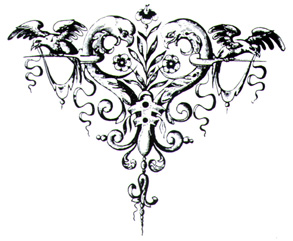
[INTRODUCTION]
Friar Martín Ignàcio de Loyola, a Franciscan from the Basque country, was certainly one of the first men to travel around the world twice, during his adventurous campaigns as a missionary. The settling of the Spanish in the Philippines, after 1565, and the founding of Manila in 1572, as previously noted, sparked off an enormous interest among King Felipe II of Spain's (Filipe I of Portugal) [°1527-r.1554(S)/ r.1580(P)-†1598] subjects for China, whose commerce and missionising had been monopolised by the Portuguese Crown up until then. Due to this, Spanish attempts to secure a way into that immense and coveted Empire were frequent.
Martín Ignácio de Loyola left Spain in 1580 as part of a group of Franciscans who were on their way to set themselves up in the Philippines, where they would arrive two years later after a stopover in Mexico. A few months later they were already in Macao, from where, oddly enough, they set off to return to Europe, following in the tracks of the Japanese ambassadorial mission that had been organised by the Company of Jesus around that time. (See: Text 17 infra) In the middle of 1584 he was already to be found in Lisbon, having completed his first relatively fast round the world trip. His return to Europe was linked to the intense games of interest which motivated the various religious Orders in the sense of attempting to break the Jesuit exclusivity in missionising China and Japan in force at the time. Following orders from his superiors, Martín Ignácio carried on to Rome where he arrived still within 1584.
As was previously noted, he met up with González de Mendoza, who was concluding his vast work on China (See: Text 16 —Juan Gonzàlez de Mendoza). The meeting between these two religious men interested in things about China was inevitable and the Franciscan was able to have lengthy conversations with the Augustinian, even handing over a copy of the ltinerário [...] (ltinerary[...]) which he had had the opportunity to write down during his extensive maritime circumnavigation. González de Mendoza immediately took advantage of this new, unexpected and informative contribution and with it prepared a third part to his Historia [...] Del gran reYno de La China [...] (The Historie of the Great and Mightie Kingdom of China [...]), which would be printed in 1585 by Roman publishers, however in Spanish. This would come to be regarded as one of the greatest publishing successes of the sixteenth century. The text which follows was in fact written down by González de Mendoza, based on a manuscript by Martín Ignácio to which he had access. Moreover he found it convenient to call attention to the work of this Franciscan through giving it a proper place in this anthology.
The restless Ignácio de Loyola, still prior to the publication of his work, left Rome on route to Spain and Portugal, taking with him authorisation from the Pope to catholicise China. In March of 1586 he departed from Lisbon to head towards the Orient, this time via the Cape of Good Hope. Eventually he arrived in Macao, but the obstacles put up by the Guangdongnese authorities, and also by the Jesuits, where such that his mission ended up being a total failure, although the Franciscan later boasted of having learned the Guanhua(Mandarin language) and of having obtained a license to reside in Guangzhou•.
Already at the end of 1587, the untiring missionary turned up in Mexico, after a voyage directly form the Cidade do [Santo] Nome de Deus (City of the [Holy] Name of God), during which time he had the opportunity to explore Upper California. After another stay in Spain, Martín Ignácio ended up settling in South America and died in Buenos Aires in 1606.

* First edition: Rome, 1585.
start p. 145
end p.